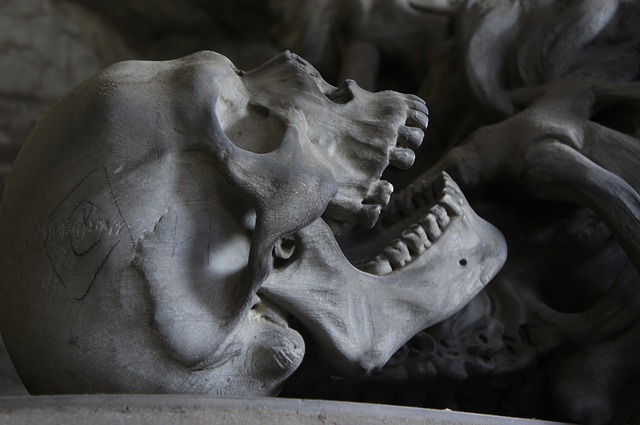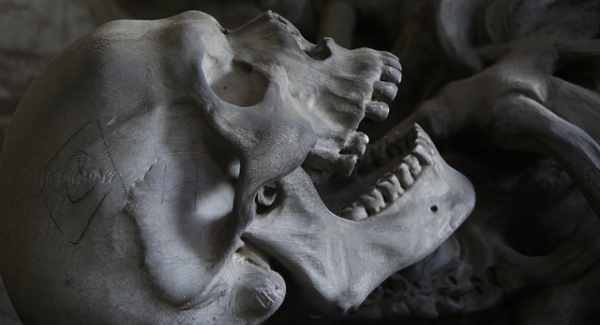
It’s hard to imagine a more fundamental question for psychology than what it is that makes us human. It’s harder still to come up with an acceptable answer. Great thinkers through the ages have puzzled over the nature of human nature, and so have contemporary psychological theorists. Are we rational animals, intuitive scientists, naked apes, information-processing machines, or battlefields of intrapsychic conflict? Many writers have made suggestions about what makes us human or wthat defines our humanity, some less serious than others (Mark Twain: "Man is the only animal that blushes. Or needs to"). Or is there perhaps no human nature at all, as the existentialists thought, no definition of humanness that works? Plato suggested "featherless biped", only to be refuted when Diogenes produced a plucked chicken.
Our own ambitions have been more modest. Instead of expounding what humanness is, we have tried to understand what people think it is. Our attempt to answer this question led us to explore some of the consequences of seeing people as having or lacking humanness. These consequences range from the dehumanization of despised groups to the making of excuses about one’s failings ("I’m only human"). We started out with few preconceptions and simply asked people to rate an assortment of personality traits on the extent to which they were human, framing that question in two distinct ways: were the traits unique to humans and were they parts of human nature. To our initial surprise, these two ways of asking the question revealed two quite distinct senses of humanness. One sense, which we call Human Uniqueness, refers to those attributes that distinguish humans from (other) animals. The other sense, which we call Human Nature, refers to attributes that are seen as fundamentally, essentially, or typically human.
Our early studies helped to clarify the composition of these two senses of humanness. Human Uniqueness attributes tend to revolve around refinement, civility, and rationality. These attributes are seen as arising relatively late in development because they are products of socialization and learning. They represent ways in which humans transcend animality through reason and culture. Human Nature attributes, in contrast, tend to involve warmth, emotion, openness, and desire. Unlike Human Uniqueness traits, these attributes are seen as early-emerging, as widespread within the population, and as cross-culturally universal; they constitute our "shared humanity". Human Nature traits are also seen as deep-seated, essence-like properties; they are fundamental or defining attributes of the person who possesses them. Rather than representing how humans transcend nature, Human Nature characteristics reflect the innate, intrinsic, and embodied aspects of humanness. However, Human Uniqueness and Human Nature are not opposites. Some attributes may be seen as unique to humans and part of our nature (e.g., imagination), some as unique to humans but not part of our nature (e.g., politeness), some as parts of human nature but not uniquely human (e.g., curiosity), and some as neither (e.g., timidity).
Our early studies helped to clarify the composition of these two senses of humanness. Human Uniqueness attributes tend to revolve around refinement, civility, and rationality. These attributes are seen as arising relatively late in development because they are products of socialization and learning. They represent ways in which humans transcend animality through reason and culture. Human Nature attributes, in contrast, tend to involve warmth, emotion, openness, and desire. Unlike Human Uniqueness traits, these attributes are seen as early-emerging, as widespread within the population, and as cross-culturally universal; they constitute our ‘shared humanity’. (Although Human Nature overlaps semantically with Warmth, and Human Uniqueness with Competence, it should be clear from these descriptions that our dimensions are not reducible to those important dimensions of social judgment; see Abdollahi & Fiske, 2008 .) Human Nature traits are also seen as deep-seated, essence-like properties; they are fundamental or defining attributes of the person who possesses them. Rather than representing how humans transcend nature, Human Nature characteristics reflect the innate, intrinsic, and embodied aspects of humanness. However, Human Uniqueness and Human Nature are not opposites. Some attributes may be seen as unique to humans and part of our nature (e.g., imagination), some as unique to humans but not part of our nature (e.g., politeness), some as parts of human nature but not uniquely human (e.g., curiosity), and some as neither (e.g., timidity).
In short, our work on everyday conceptions of humanness suggests that there are two distinct ways in which humanness can be ascribed to entities, and two corresponding ways in which it can be denied to them, each linked to a contrastive type of nonhuman. We have found support for these links in a variety of studies. For example, people seen as lacking Human Uniqueness attributes are implicitly associated with animals and those lacking Human Nature attributes are implicitly associated with robots (Loughnan & Haslam, 2007). Similarly, across three cultures Human Uniqueness attributes distinguished humans from animals whereas Human Nature attributes distinguished humans from robots (Haslam et al., 2008). Recent research by Wegner and colleagues on "mind perception" (Gray, Gray & Wegner, 2007) reveals two very similar dimensions: a dimension of "agency" (i.e., rationality, self-control, morality) distinguishes humans from animals, whereas a dimension of "experience" (e.g., emotion, desire) distinguishes humans from robots and inanimate entities.
Humanness in Group Perception
The relevance of this simple model to social perception, and in particular how some people can be seen as less human than others, should be obvious. Humanness may be a particularly important concept in the perception of groups. Research by Leyens and colleagues (Leyens et al., 2003) shows that people often perceive members of outgroups (“them”) as less human than members of their ingroup (“us”). They demonstrate this bias by showing that people are reluctant to attribute uniquely human emotions (e.g., nostalgia, embarrassment, admiration) to outgroup members compared to ingroup members, but attribute emotions that we share with other animals (e.g., happiness, fear, anger) to ingroup and outgroup equally. This subtle tendency to see other groups as less human – which is called “infrahumanization” – is distinct from the tendency to prefer our ingroup or derogate outgroups (i.e., ingroup favoritism or ethnocentrism; see van Zomeren, 2008 )), and it even occurs when there is no conflict between groups. It clearly rests on humanness in the Human Uniqueness sense, and implies that outgroup members are seen as more animal-like than ingroup members.
Perceiving other groups as less human than our own can also be demonstrated using the Human Nature sense of humanness, and attributes other than emotions. For example, in unpublished studies conducted by Paul Bain , participants attributed more Human Nature personality traits or values to their national ingroup (Australians) than to a variety of outgroups (British, Indonesians, Japanese, Singaporeans). In other studies from our laboratory, white Australians saw themselves as having more Human Nature traits than Asian Australians, and psychology students rated their ingroup higher on Human Nature traits than medical students. Even when ingroup and outgroup are represented in the simplest and most content-free stimuli – by words such as "we" and "us" versus "they" and "them" – participants associated Human Nature traits with the ingroup more strongly than with the outgroup. This association between the ingroup and humanness appears to be largely unconscious, and it can be demonstrated using computer-based experimental tasks that assess people’s rapid and automatic responses to groups.
Infrahumanization-like findings involving the Human Uniqueness sense of humanness can also be observed with personality traits. We have found that white Australians attribute more Human Uniqueness traits to themselves than to indigenous people, and Asian Australians attribute more Human Uniqueness traits to themselves than to white Australians. These findings imply that Human Nature and Human Uniqueness are both meaningful dimensions along which group members subtly deny the humanness of other groups. Some outgroups are seen as lacking emotion and warmth and implicitly likened to objects or robots , and others are seen as lacking rationality and refinement and implicitly likened to animals.
Not all group perception is based on ingroup-outgroup dynamics. Some stereotypes of social groups are widely shared within a community, and the content of these stereotypes also varies on our dimensions of humanness. For example, we have found that both male and female participants attribute more Human Nature traits to women than to men. Similarly, the Loughnan and Haslam (2007) study mentioned earlier showed that stereotypes of some social groups (e.g., businesspeople, police) portray them as lacking Human Nature and thus associate them with robots, whereas stereotypes of other groups (e.g., artists, children) portray them as lacking Human Uniqueness and associate them with animals.
These sorts of commonplace denials of humanness are now well-documented by social psychologists. Many of them are quite subtle, unconscious, and unaccompanied by group-hatred. There is clearly some distance between these phenomena and the sorts of extreme group perceptions that are usually described as "dehumanizing". However, we would argue that these more extreme phenomena – pejorative use of animal labels, objectification, actions that treat people as if they lack moral worth – have their roots in the kinds of everyday denials of humanness that we are studying. We suspect that these everyday denials can become overt and destructive under conditions of group conflict. The form that these overt expressions take can be illuminated by our model. Groups that tend to be seen as lacking Human Uniqueness attributes may come to be seen as animals under conditions of intergroup friction, and groups that are seen as lacking Human Nature attributes are at risk of being seen as unfeeling objects or mere cogs in a soulless machine. In any event, it should be a sobering thought that mild forms of humanness denial are pervasive in our everyday perception of groups.
Humanness in Person Perception
As we have seen, people seem to perceive some groups as more human than others. There is also a growing body of research showing that people see themselves as more human than other individuals. This tendency may be one of a number of "self-serving biases" that allow us to see ourselves in a positive light and protect our self-esteem (Leary, 2007). For example, people tend to rate themselves as "above average" on desirable attributes, claim responsibility for their successes but not their failures, and see their futures as more golden than their peers’. People even see themselves as less susceptible to self-serving biases than other people.
In our own research (Haslam et al., 2005), we have discovered that people tend to see themselves as having more Human Nature traits than the average person, a new bias that we call "self-humanizing". There is no corresponding tendency to see the self as above-average on Human Uniqueness traits. In other words, we tend to see ourselves as warmer, more emotional and more open than average, but not more rational, civilized and refined. By implication, the average person is seen as more robotic, but not more animal-like, than the self. Self-humanizing is also distinct from the tendency to see oneself as having more desirable attributes than average (the well-known "better-than-average" effect). In fact, we have found that people see themselves as having more undesirable Human Nature traits than average.
There are several reasons why people might think they have more Human Nature attributes than other people. Human Nature attributes, such as emotional traits, tend to be somewhat private, and hence less visible in others than in the self. Because Human Nature attributes are seen as typical of humans we may attribute them to ourselves because we believe we are particularly good examples of our species, or because we do not wish to seem deviant. We have found some support for these ideas, and for the idea that Human Nature traits convey a sense of depth about the person, and we tend to see other people as shallower than ourselves.
There is another fascinating explanation for self-humanizing which came up after an unexpected discovery in our research. In a number of studies, we found that people self-humanize undesirable traits more than desirable traits. That is, we see our own flaws as more human than other people’s flaws. When faced with our imperfections we may be motivated to see them as human. As Eminem confesses in Cleanin’ out my closet, "I maybe made some mistakes … but I’m only human". On this view, self-humanizing acts as a self-protective coping mechanism, allowing us to deal with evidence of our weaknesses and failings by seeing them as part of human nature. Seen in this way, our flaws are not ours alone: they are universal and part of our fundamental nature. Jan Werich , the Czechoslovak actor and satirist, expressed this eloquently when he said that "people would not be people if they had no flaws." If humans are inherently flawed, then one’s own human flaws are excusable.
Conclusions
Our work suggests that humanness plays an important role in social perception; not only in how we perceive groups but also how we see other individuals and ourselves. It is not a simple concept, but it does appear to be tractable when we pay attention to the different ways people understand it. Our two dimensions offer a relatively simple framework for understanding how it is possible to see some people as being less fully human – or more nonhuman – than others. The consequences of these perceptions, whether they involve blatant dehumanization or subtle excuses for our failings, are likely to be wide-ranging and significant. Our laboratory-based research has yet to explore these consequences in realistic settings, and that is a challenge for future work.
References
Abdollahi, A., & Fiske, S. T. (2008). Social judgment: Warmth and competence are universal dimensions. Social Judgment: Warmth and Competence are Universal Dimensions. In-Mind Magazine, 7.
Gray, H. M., Gray, K., & Wegner, D. M. (2007). Dimensions of mind perception.Science, 315, 619.
Haslam, N. (2006). Dehumanization: An integrative review.Personality and Social Psychology Review, 10, 252-264.
Haslam, N., Bain, P., Douge, L., Lee, M., & Bastian, B. (2005). More human than you: Attributing humanness to self and others.Journal of Personality and Social Psychology, 89, 937-950.
Haslam, N., Kashima, Y., Loughnan, S., Shi, J., & Suitner, C. (2008). Subhuman, inhuman, and superhuman: Contrasting humans with nonhumans in three cultures.Social Cognition, 26, 248-258.
Leary, M. R. (2007). Motivational and emotional aspects of the self. Annual Review of Psychology, 58, 317-344.
Leyens, J. Ph., Cortes, B. P., Demoulin, S., Dovidio, J. F., Fiske, S. T., Gaunt, R., Paladino, M. P., Rodriguez, A. R., Rodriguez, R. T., & Vaes, J. (2003). Emotional prejudice, essentialism, and nationalism. European Journal of Social Psychology, 33, 704-717.
Loughnan, S., & Haslam, N. (2007). Animals and androids: Implicit associations between social categories and nonhumans.Psychological Science, 18, 116-121.
van Zomeren, M. (2008). Complementing individualism with the social identity approach. Complementing Individualism with the Social Identity Approach. In-Mind Magazine, 7.



